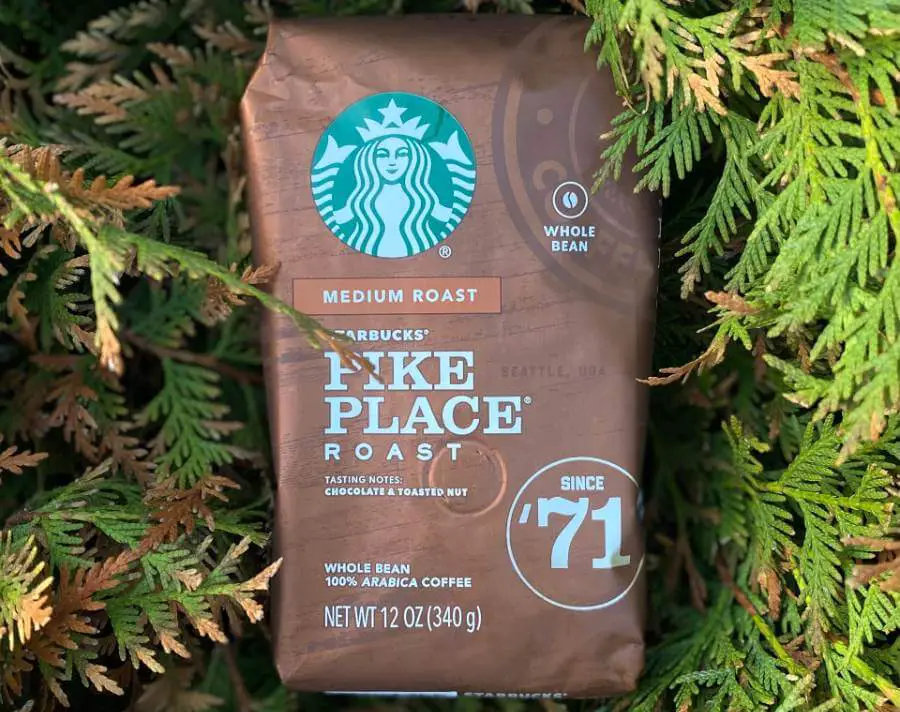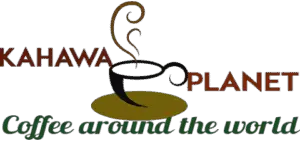Did you know that for the first decade of its inception, the original Starbucks did not sell coffee drinks at all? The first stores sold whole coffee beans, ground coffee, tea, spices, cookware, and coffee-making equipment.
The first Starbucks stores would make some coffee, not to sell it but to give it freely to the customers as a way of attracting and engaging them. However, free coffee was stopped in 1975 and it wasn’t until 1982 that Starbucks started selling brewed coffee at one of its stores.
During the 1970s and early 1980s, coffee shops – as we know them today – were not popular in the United States as the norm was to buy coffee beans and make coffee at home.
Starbucks would later play a key role in popularizing the espresso bar culture in North America thanks to Howard Schultz. Schultz was a visionary sales executive who later became Starbucks’ longest-serving chief executive officer and chairman.
This article is the incredible story of Starbucks, its rich history, and how it evolved into the premier coffeehouse that we all know.
The coffee chain has an influential social media presence with a combined over 65 million followers that are spread across the major social media platforms – Facebook, Twitter, TikTok, Instagram, and YouTube.
What is Starbucks?
Starbucks is the biggest and most popular global coffeehouse chain. It has over 30,000 stores worldwide with an elaborate ever-expanding menu of coffee and non-coffee beverages. The company runs effective marketing strategies and innovative expansion campaigns making it the most recognizable coffee brand in the world.
Starbucks has over 15,000 stores (both company-operated and licensed) in the United States and over 1300 store locations in Canada. Overseas, Starbucks has over 700, 5000, and 2000 stores in the United Kingdom, China, and across Europe respectively among other 80+ markets.
Starbucks Corporation is a premier global employer and ranks in the top 30 highest employers with over 300,000 employees. As of January 2022, its net worth was approximately $115 billion making it one of the top 150 companies by market capitalization.
Reports show that Starbucks Corporation’s annual revenue for the fiscal year ending 2021 surpassed $29 billion.
Starbucks also operates reserve roasteries that focus on artisan coffee and state-of-the-art specialist roasting plants for its coffee. As of 2022, Starbucks has five roasting plants in the US, one in Amsterdam, and is about to complete a $130 million new roasting plant in Beijing, China.
This multi-billion dollar behemoth sources its coffee beans straight from the farmers and roasts them for use in its stores and for retail.
Starbucks coffee farm, Hacienda Alsacia, in Costa Rica is a center for research and development. The coffee farm employs top agronomists to develop coffee plant varieties that are resistant to diseases to improve the quality of coffee and devise the best practices to make coffee farming worthwhile for small-scale farmers.
Through its open agronomy model, Starbucks shares its research and innovation findings freely with coffee farmers around the globe. It has farmer support centers in different coffee-growing regions to collaborate with the farmers, suppliers, and cooperatives to improve the quality of coffee and the crop’s profitability.
The Interesting Story of How and When Starbucks was Founded
According to Zev Siegl, the story of Starbucks starts in 1970 when he and his friends – Jerry Baldwin and Gordon Bowker – stumbled upon the idea of coffee when they were brainstorming for business ideas.
Gordon Bowker and Jerry Baldwin had been roommates in college at Berkeley and had later become acquainted with Siegl.

While researching the viability of the coffee business, Siegl learned about Alfred Peet, a coffee master who was running a thriving gourmet coffee business in San Francisco. Siegl phoned Peet who generously accepted his request to visit Peet’s store and roasting plant across the Bay in Berkeley.
Alfred Peet not only taught and mentored the three but also allowed Jerry and Bowker to briefly apprentice at his store.
Peet would also supply the new startup with high-quality freshly roasted coffee beans to sell.
In effect, the first Starbucks store opened its doors in March 1971 around the historic Seattle Pike Place Market as a coffee, tea, and spice store. Starbucks bought Peet’s roasted coffee and packaged or ground it before selling it. They also sold coffee equipment, kitchenware, and other items.
With Peet’s guidance, the Starbucks founders would later import an old coffee roaster from Holland and set up a roasting facility at an old warehouse in Seattle where they started roasting their own coffee.
They shifted from buying roasted coffee to buying green coffee beans from Peet and they experimented with his acclaimed deep-roasting methods.
They also hired Jim Reynolds, a coffee enthusiast, in 1973 who went on to learn roasting from Alfred Peet. Reynolds became Starbucks’s master roaster.
Eventually, Starbucks would start buying green coffee directly from coffee merchants.
How Starbucks Became a Top Coffeehouse Chain
By the end of the first decade, Starbucks operated five stores in Seattle. Zev Siegl left the company in 1981 for other ventures.
Around this time, Howard Schultz, an executive at Hammarplast, a Swedish company that sold coffee makers to Starbucks was captivated by the number of orders that were being shipped to Starbucks.
Out of curiosity, he visited Starbucks in 1982 and was poached to become Starbucks’ head of marketing. Schultz initiated several changes to improve customer experience such as instilling customer service skills among the employees and making brochures to guide the clients about the products.
In 1983, Jerry and Gordon bought Peet’s Coffee and Tea from Alfred Peet, and the then Starbucks roastmaster, Jim Reynolds, moved to Peet’s in 1984.
Starbucks sent Schultz to an international trade show in Milan in the Spring of 1983, where he was fascinated by Italy’s cafes and coffee culture. He was captivated by the fact that there were hundreds of espresso bars in Milan and he saw an opportunity to replicate the same in the US.
Having tasted his first latte in Milan, Schultz believed that there was enormous potential in selling espresso drinks in America.
To his surprise, Jerry and Gordon did not buy into his idea. Despite allowing Schultz to test his concept by establishing an espresso bar at their newest store in downtown Seattle, they did not envisage Starbucks as an espresso bar that sold cappuccinos and espressos.
Consequently, Howard Schultz quit Starbucks in 1985 to set up his own espresso bar under the name Il Giornale which was an instant hit. The company purchased roasted coffee from Starbucks.

The Take-off (Schultz Acquires Starbucks)
In March 1987, Schultz with the support of other investors bought Starbucks and its locations from its founders who retained Peet’s Coffee and Tea.
He renamed the coffeehouse Starbucks Corporation and revamped its operations to focus mainly on the cafe concept while still selling coffee beans and coffee gear.
Starbucks saw unprecedented growth and within five years, it had scaled to over 160 stores across North America. The corporation completed its initial public offering in 1992. Its market value at the time was $271 million. The same year, the company also opened a roasting facility in Kent, Wash.
1994 saw Starbucks open its first drive-thrus in Southern California.
By 1995, Starbucks had over 650 stores and began serving Frappuccinos. The company also opened another roasting plant in York, Pa.
Starbucks opened its first overseas stores in Japan and Singapore in August and December 1996 respectively. Starbucks had grown to over 1000 stores. Bottled Frappuccino debuted the same year and heralded the entry of Starbucks into the traditional grocery market.
Here is an amazing article about the available flavors of bottled Frappuccino drinks.
By the year 2000, Starbucks was in over 15 countries and had over 3500 stores.
Over the next two decades, the coffee chain would expand across the world and some of its historical timelines include
- 2003 took over the Seattle Coffee Company and established roasting plants in Nevada, US, and Amsterdam, Netherlands. Its stores reached over 7000.
- 2005 acquired Ethos Water, a bottled water company. See how to order tap water from Starbucks when you don’t want to pay for bottled water.
- 2008 acquired the Coffee Trading Company that made the Clover coffee brewing system. Also joined Twitter and created the Starbucks Facebook page
- 2009 launched Via® Instant coffee and set up a roasting plant in South Carolina. Also launched the rewards loyalty program
- 2012 launched Blonde roast and handcrafted refreshers. Bought Teavana.
- 2015 Launched cold brew coffee and operated over 23,000 stores.
What Industry is Starbucks in
Starbucks is primarily in the food and beverage retail sector as its core business is the retail of drinks and snacks which are reported to contribute over two-thirds of its total revenue. The coffee giant also roasts and sells specially sourced coffee beans.
Other Starbucks branded products include travel mugs, cold and reusable cups, and straws.
See the most popular toasty drinks at Starbucks.
How Did Starbucks Get its Name?
Gordon Bowker, one of Starbucks’ founders, stated that they couldn’t find a suitable name for their new coffee venture. Initially, they were to call it a cargo house until a few coincidental events happened.
Terry Heckler, an artist and Bowker’s partner in an advertising agency, suggested that words that started with “st” held some power. Bowker, a writer, started noting down words that began with the consonants “st”.
Around this time, Bowker came across an old mining map that featured the cascades and Mount Rainier. Bowker noticed that one of the towns on the map was called Starbo which reminded him of Starbuck – one of the characters in Herman Melville’s novel, Moby Dick.
Bowker discussed the name with Jerry and Siegl and they named their business Starbucks.
Starbucks Original Logo and its Evolution
Terry Heckler made the original Starbucks logo which was a bare-breasted siren with two tails surrounded by the words ” Starbucks, coffee, tea, spices”.
Starbucks’ logo has changed over the years to reflect the company’s main colors, green and white, and has become one of the most recognizable and memorable logos.
The first change occurred in 1987 when Howard Schultz merged Il Giornale with Starbucks. The new logo by Heckler replaced the brown color with Il Giornale’s green and featured “Starbucks Coffee” only around the siren.
The logo also introduced a starred crown for the siren and two stars in between the words Starbucks and coffee.
In 1992, Starbucks reimagined its logo once again and cropped the lower parts of the siren including the naval so that the siren became the main focus. This logo also had the words “Starbucks coffee” around the siren.

The current Starbucks logo that debuted in 2011 adopted a minimalist approach and features only the siren in green and white and has no wordings.

